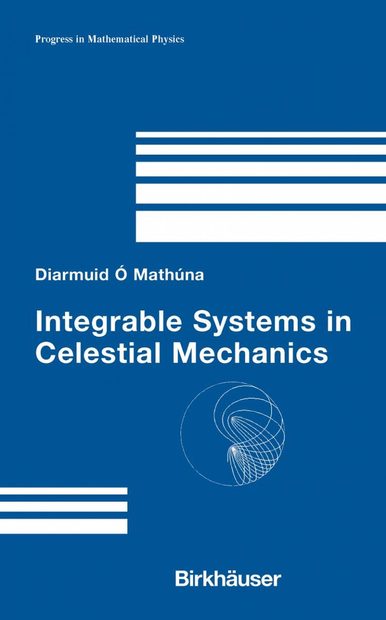![Integrable Systems in Celestial Mechanics Integrable Systems in Celestial Mechanics]()
Click to have a closer look
About this book
Contents
Customer reviews
Related titles
About this book
This work focuses on the two integrable systems of relevance to celestial mechanics, both of which date back to the 18th century. Under discussion are the Kepler (two-body) problem and the Euler (two-fixed center) problem, the latter being the more complex and more instructive, as it exhibits a richer and more varied solution structure. Further, because of the interesting investigations by the 20th century mathematical physicist J.P. Vinti, the Euler problem is now recognized as being intimately linked to the Vinti (earth-satellite) problem; in short, the Euler problem and the earth-satellite problem are in a dual complementary relation.
The present work shows that the solutions to all of these integrable problems can be put in a form that admits the general representation of the orbits and follows a definite shared pattern. A key feature of this treatment involves a full analysis of the planar Euler problem (yielding an exact solution form in terms of Jacobian elliptic functions) via a clear generalization of the form of the solution in the Kepler case (expressed in terms of trigonometric functions). In contrasting the issues involved in the Kepler-Euler problems, the author raises current issues in analysis and astronomy, placing these classical problems in a modern context, with original insights that have hithertofore not appeared in book form.
The material will be of interest to graduate students and researchers interested in dynamical systems, statistical mechanics, and mathematical physics, as well as applications to astronomy, astrophysics, cosmology, aerospace engineering, gravitation and orbital theory.
Contents
General Introduction.- The Kepler Problem (Two-Body Problem): the central Newtonian potential.- Bernoulli solution.- Features of the central Newtonian potential.- The Non-Central Newtonian Potential.- The Euler problem: two fixed centers of attraction.- The Vinti problem: earth-satellite theory.- Implications for perturbation theories.- Relativistic context.- Index.
Customer Reviews



































